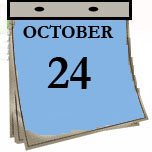 |
||||||
 |
||||||
VENICE
Venice is considered the city of art, romance and
prestige. The extraordinary architecture was built on an archipelago of
small islands separated by a network of canals crossed by approximately 400
bridges, once wooden and then replaced by stone.
The Grand Canal is the main city artery. It is crossed by three bridges
and has the shape of an upside down “S” dividing the city in two parts and
in their turn divided into six “sestieri” (districts): Cannaregio, San Marco
and Castello on the left side; Santa Croce, San Polo and Dorsoduro on the
right side of the canal. Water transport undoubtedly prevails over land
travel, with gondolas, ships, ferries, and yachts serving as taxis to
transport people and goods. There are few main roads and several small
“calli” (narrow streets) developed along canals, “campi” (squares adjacent
to churches), bell towers and “fondamenta” (streets along the canals) where
motor vehicles are not allowed. Refugees from Spina Adria and Aquileia after
the invasion of the Huns in the 5th century AD founded Venice.
The Doge under the protection of the Byzantine Empire governed it by
“maritime tribunes” and later. In the 9th century the city became a very
important commercial port, connecting the eastern and western markets
through the Adriatic Sea. Its commercial power soon resulted in military
power. Within a few years, Venice dominated all the east Adriatic coast,
reaching the East, colonising the territories and conquering important
markets, competing with Genoa and with the other Maritime Republics to
assert its power.
The Turks chased the Venetians from many eastern colonies. The
repercussions of the French Revolution affected this perfect aristocratic
government where commerce and military power supported each other. In 1797
Venice was weak and after the Campoformio treaty, it was subject to Austria
and subsequently annexed by Italy. The Grand Canal, offers a quick view of
the most beautiful palaces in Venice: the Academia, the Cà d'Oro, the
Casino, the palace of the Biennial, the University, the Chiesa della Salute
and the popular Rialto bridge, up to Piazza San Marco where the canal opens
into a wide area.
The square is the heart of Venice and its symbol. It is an
architectural jewel and one of the most beautiful squares in Italy; a
miracle built in trachyte and Istrian stone. In the past, religious and
civil ceremonies took place in this square and also the famous Carnival. At
its end there is the Basilica and the Clock Tower. The coffee bars and
restaurants surrounding it are pleasant meeting places. Glass blowing is
particularly interesting and takes place in the Island of Murano with
several workshops expert in blown glass and artistic crystal manufacture.
The manufacture of the so-called “murrine” is particularly difficult and
beautiful.
These are art decorations where coloured glass is blown and cut inside
glass globes with expertise and extraordinary precision. The manufacture of
lace is also extraordinary. Several workshops continue to manufacture
Venetian mirrors, made with ancient techniques, with silver plates on glass,
enriched by glass frames with elegant shapes.



